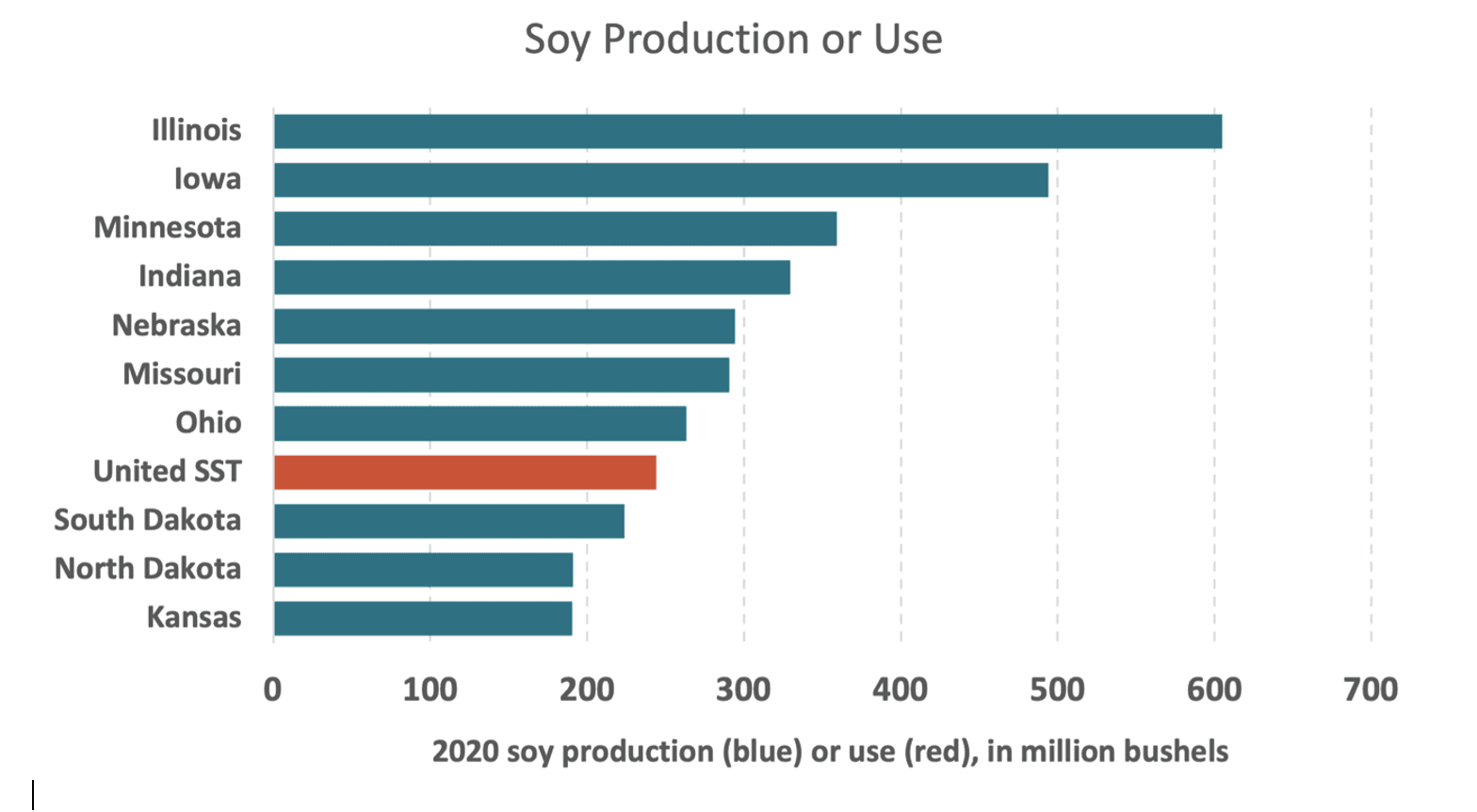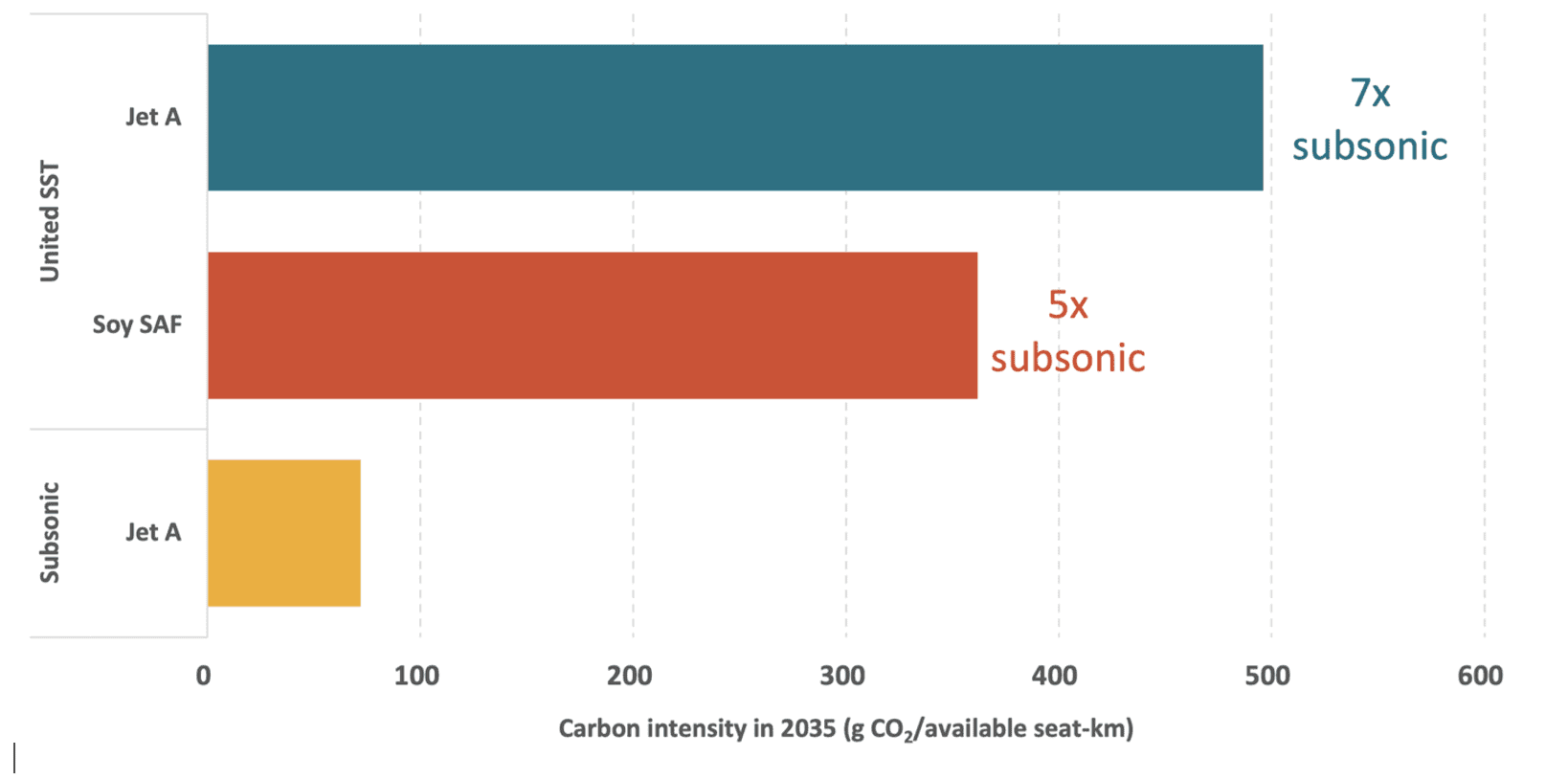Blog
Zero cheers for the supersoynic renaissance
Regular readers will recognize several recurring themes in my writing, including the risks involved with reviving carbon-intensive supersonic aircraft and the challenges of scaling sustainable aviation fuels (SAFs). In this installment I deal with both.
In June 2021, United Airlines announced that it intends to purchase 15 “Overture” aircraft from Boom Supersonic, with an option to purchase 35 more. In June 2022, United CEO Scott Kirby reaffirmed that United’s purchase remains “on track”. Those planes, we were originally told, will operate on 100% synthetic SAF produced from renewable electricity. In a January 2022 study conducted in partnership with MIT we concluded that even such a high-integrity “e-fuel” isn’t likely to mitigate the climate impact of supersonic aircraft.
Unfortunately, the prognosis for delivering supersonic aircraft that burn clean fuels has gotten even bleaker. Last September, the Biden administration announced the “Sustainable Aviation Fuel Grand Challenge”, a whole-of-government initiative to spur the production of 3 billion gallons of SAF by 2030. That’s more than a 100x increase from 2020 global production. The huge increase in biofuel volume raises concern that, rather than using the advanced fuels promised by Boom, SAFs would rely on off-the-shelf, crop-based biofuels. The risks surrounding this strategy are described in this blog and in a recent letter to the White House.
Producing transport fuels from corn, soy, and palm is controversial because it risks triggering indirect emissions from cropland expansion in response to increases in crop demand. In the worst case, tropical forests would be cut down to grow biofuel crops.
In addition, producing transport fuels requires a lot of energy. In 2020, the US devoted about a third of its corn and soybean harvests to production of ethanol and biodiesel for road transport. A question immediately arises: How much additional cropland would be needed to fuel United’s fleet, should it decide to use readily available crop-based SAFs?
Let’s look at the numbers. MIT’s modeling suggests that an Overture-like aircraft with 75 seats operating at 170% the speed of sound (MN 1.7) would burn about 70,000 tonnes of jet fuel per year, the equivalent of 24 million gallons. This assumes 2.25 daily roundtrips of about 3800 km each. Multiplying that by 15 aircraft implies about 360 million gallons of “neat” SAF used per year. (Neat refers to a 100% unblended fuel, as opposed to the blends that are certified for commercial use today).
Next, we translate this fuel demand into cropland required. Let’s assume that the SAF is produced using soy through hydrotreating (HEFA), a process used worldwide to produce renewable diesel fuel. Assuming 27 kg of soybeans per bushel, and a 16% fuel yield per kg of soy, 250 million bushels of soybeans are needed to produce 360 million gallons of SAF. That’s about 6% of U.S. production in 2020 and more than the 5 million acres of soybeans planted in South Dakota that year (Figure 1).

Figure 1. U.S. soy production and projected SST use of soy, 2020
Now that’s just for the 15 supersonic planes that United has ordered from Boom. Those five million acres would not supply fuel for the other 860+ aircraft that United operates. Yet United’s sustainability strategy is to rely heavily on scarce SAFs for those planes as well, suggesting a substantial increase in its future claims on US cropland for fuels. Whatever its projected reliance on biofuels, United has barely begun to implement this strategy. While it has optioned substantial SAF purchases through offtake agreements with companies like Alder Fuels, it purchased only 625,000 gallons of SAF in 2020. That’s about 0.03% of United’s total jet fuel use in travel-depressed 2020.
Moreover, the emissions reduction achieved by using biofuels in supersonics leaves much to be desired. SAFs contain carbon, and when burned emit carbon dioxide (CO2) at levels similar to those of combusted fossil fuel. That means that their emission savings depends on the amount of CO2 captured from the atmosphere during crop production—net of all emissions associated with growing those crops and converting them to biofuel, and net of the indirect effects of land-use change.
After accounting for these carbon inflows and outflows, the net GHG reductions are typically modest, at best, for crop-based SAFs. According to life-cycle emission accounting rules developed by the UN, SAFs derived from US soy reduce life-cycle GHG emissions by about one-quarter (27%) compared to conventional “Jet A” fuel. Other research estimates that indirect emissions from soy production are higher still.
So if an Overture-like supersonic were operated on soy-derived SAF, its carbon intensity would fall from about 500 grams of carbon dioxide per seat kilometer (g CO2/seat-km) to 360 g CO2/seat-km. By way of comparison, subsonic aircraft are expected to emit about 72 g CO2/seat-km in 2035—on fossil Jet A fuel! Take that in: Earmarking the oils from South Dakota’s soybean production for United’s supersonic fleet would reduce the fleet’s CO2 emissions from seven times worse than conventional aircraft to five times worse.

Figure 2. Carbon intensity by aircraft and fuel
This finding highlights the challenges of re-introducing supersonic aircraft during a climate crisis. In an era when airlines are promising to slash emissions dramatically, it’s hard to see how a technology that increases emissions compared to today’s planes will gain social acceptance.
This analysis ignores another potential impact of soy use in supersonic aircraft, that of increasing food prices. US soy production contributes to global vegetable oil markets, and prices have spiked in recent years in part due to biofuel mandates. Diverting soy oil to jet fuel would put airlines directly in competition with food at a time when consumers are being hammered by historically high food prices.
The potential for additional price increases as crops are diverted to fuel production is real and worrisome. The idea that the US government would subsidize the feeding of supersonic jets, rather than people, beggars belief. There are ways to avoid the problem, including not providing tax credits for crop-based SAFs or SAFs used in supersonic aircraft. But step one is to just say no to the supersoynic renaissance.
